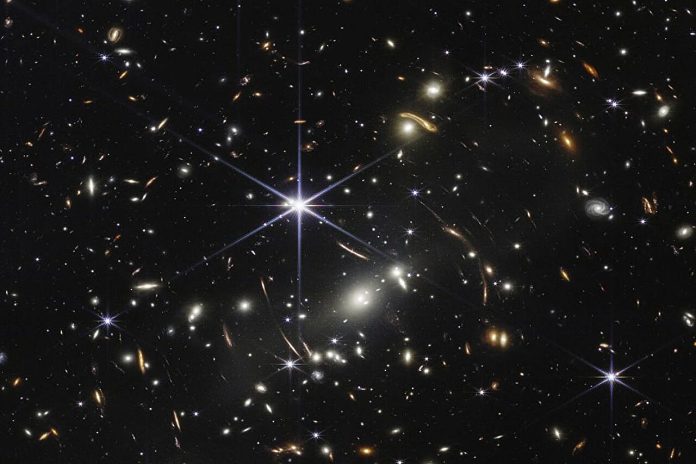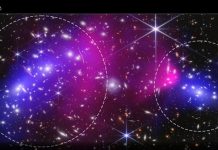
Did you know we can look back in time?
Not by building a time machine, but by gazing into the vast universe through powerful telescopes.
Recently, the James Webb Space Telescope (JWST), one of the most advanced telescopes ever made, captured a unique image of thousands of galaxies.
This picture, named Webb’s First Deep Field, is like a treasure map for scientists, showing them galaxies that existed billions of years ago!
A talented group of scientists from Canada and other countries, led by Dr. Gaël Noirot, decided to dig deep into this treasure.
They used a special Canadian instrument aboard the JWST called NIRISS to study the light coming from these galaxies.
Think of it like a super-smart camera that can capture more than just pictures; it can also break down the light to tell us cool stuff about these galaxies, like how far away they are from us.
When the universe expands, the light from distant galaxies gets stretched, kind of like pulling a piece of chewy candy.
This stretching changes the light’s color, making it redder. By measuring this ‘redness’, scientists can figure out how far away a galaxy is. This is called “redshift”. Dr. Noirot’s team looked at the redshift of nearly 200 galaxies to learn their distances.
The exciting news? The team found many galaxies that are over 4 billion years old, meaning their light took over 4 billion years to reach us!
That’s almost as old as the Earth itself!
These galaxies are part of a massive group called the SMACS 0723 cluster, which is like a big cosmic family held together by gravity.
One of the most thrilling discoveries was the Sparkler galaxy. It’s a very special galaxy 9 billion light-years away, full of some of the oldest star groups formed after the universe began. And guess what? The Sparkler isn’t alone.
It’s part of another galaxy group, which means it has many galaxy friends and neighbors.
By studying these old galaxies, scientists hope to learn more about our own home, the Milky Way galaxy.
They want to know how our galaxy and its neighbors grew up over billions of years. It’s like piecing together a cosmic family tree!
Thanks to the advanced tools like the NIRISS, scientists will continue to explore this amazing deep field image in even more detail. And as they do, other researchers around the world will also use this data to uncover more mysteries of our universe.
In short, with the help of incredible Canadian technology, scientists are traveling back in time, exploring ancient galaxies, and unraveling the universe’s secrets.
So, next time you look up at the night sky, remember: there’s a whole lot more out there than meets the eye!
Their study was published in the Monthly Notices of the Royal Astronomical Society.
Follow us on Twitter for more articles about this topic.



